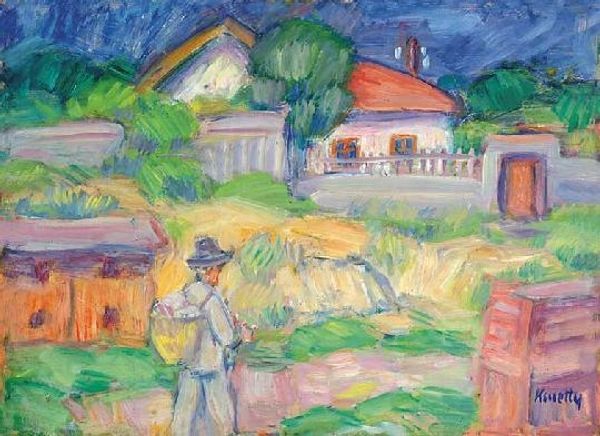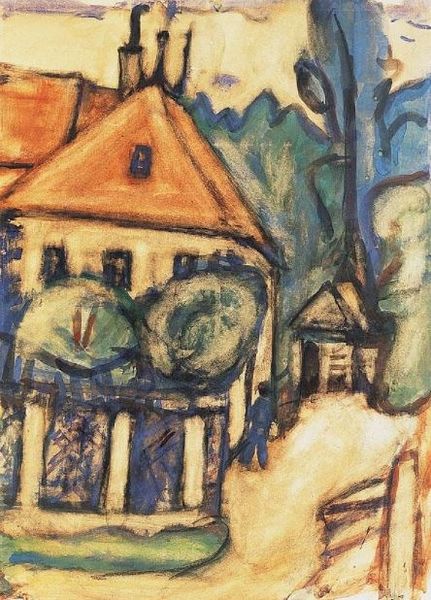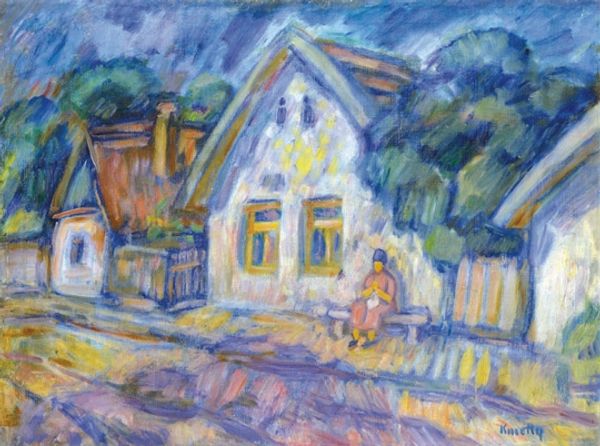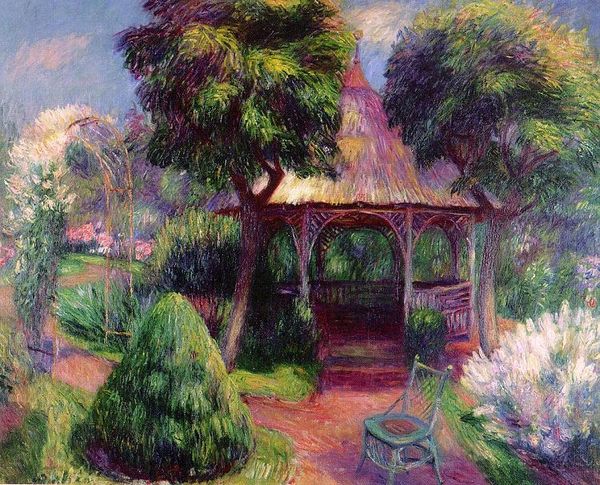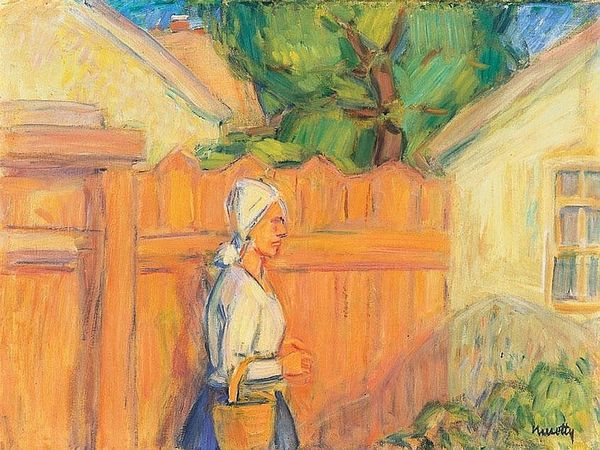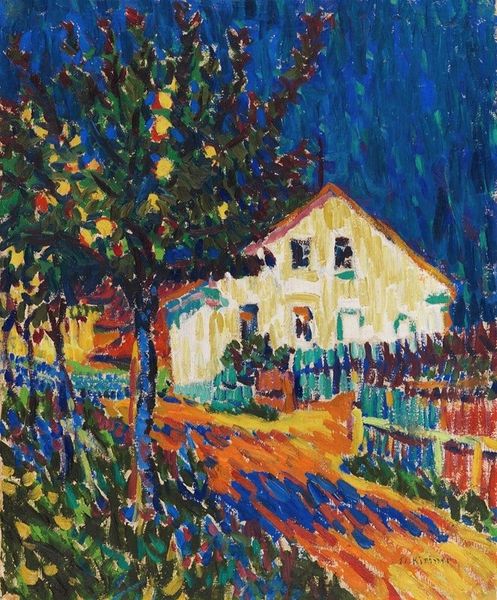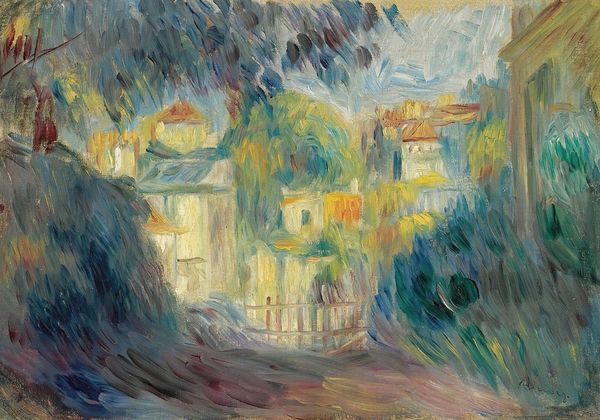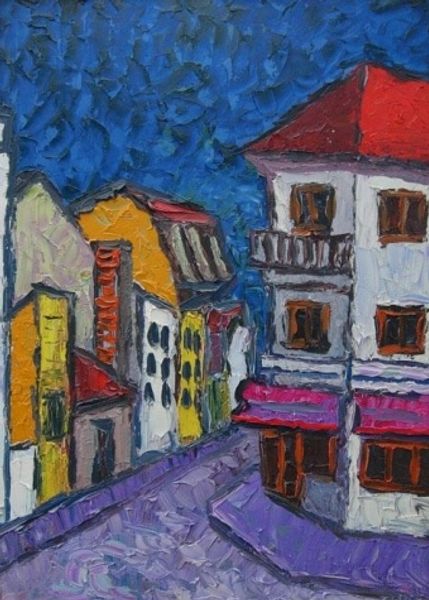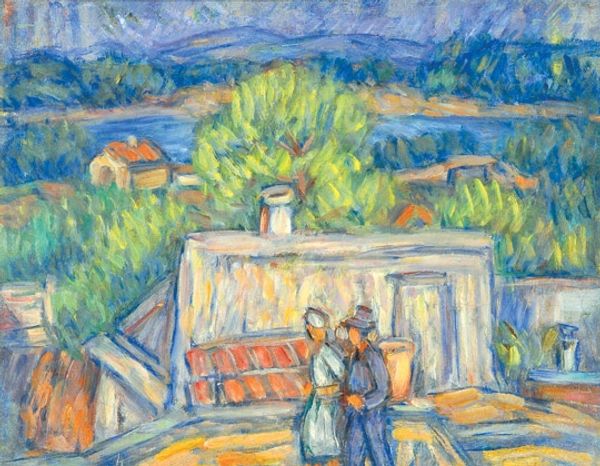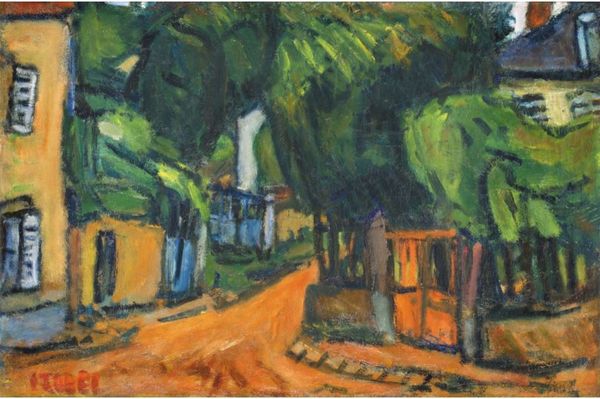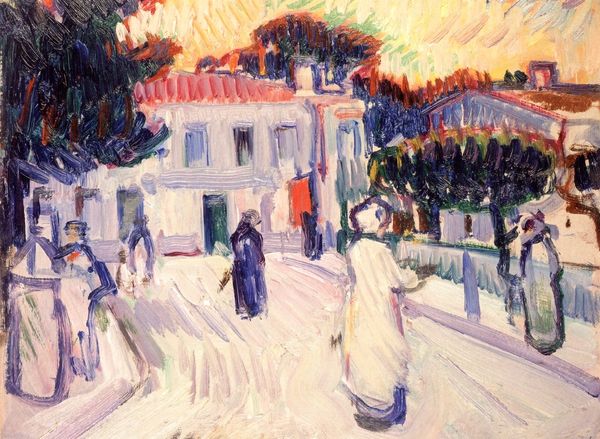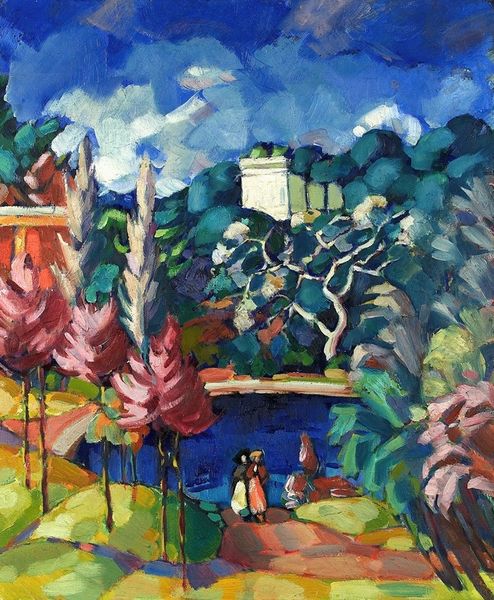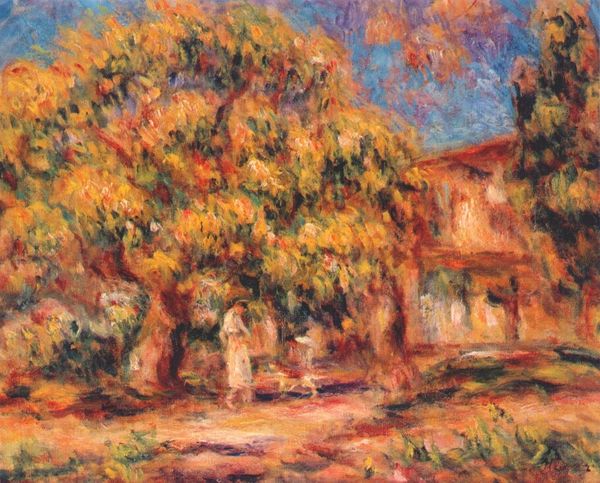
painting, plein-air, oil-paint, impasto
#
fauvism
#
painting
#
impressionism
#
plein-air
#
oil-paint
#
landscape
#
figuration
#
impasto
#
romanticism
Copyright: Kmetty János,Fair Use
Editor: Here we have Kmetty János’s "Walking Couple in Szentendre", an oil painting that seems to capture a fleeting moment. I find the color palette quite striking, almost fauvist, and the impasto technique gives it a tangible texture. What strikes you when you look at this piece? Curator: It's interesting that you see fauvist elements. I'd say this painting provides a lens into the construction of identity within the romantic, yet rapidly changing landscape of early 20th-century Hungary. The couple, likely working class based on their attire, is framed by the architecture, the quaint town which might represent both a refuge and a constraint. Editor: A constraint? How so? Curator: Szentendre was and is, in many ways, a place defined by its history but it also evolved into a haven for artists. By choosing to depict an ordinary couple in such a location, Kmetty seems to ask: Who has access to this ‘romantic’ ideal, and who is excluded? How does rapid modernization and the art world affect them? Does the romantic style almost “trap” them in the painting itself? Editor: I never considered that angle. I was mostly focused on the technique and color. So you’re saying that it's important to consider social and economic contexts to enrich its meaning? Curator: Absolutely! It urges us to consider whose stories are valued and preserved. And how might those choices reflect the larger socio-political dynamics at play? Editor: That is insightful. Looking at it again, I notice how the figures blend into the surroundings and aren't the primary focus, almost hinting at erasure. Curator: Precisely. And Kmetty, during his whole career, continued to show figures in many different walks of life. It begs the question if he was aware of their existence but wasn’t considering integrating his subjects or simply trying to portray them as they are? This way the piece sparks a contemporary discourse, too, does it not? Editor: It certainly does. I’ll definitely view art with a broader perspective now!
Comments
No comments
Be the first to comment and join the conversation on the ultimate creative platform.
